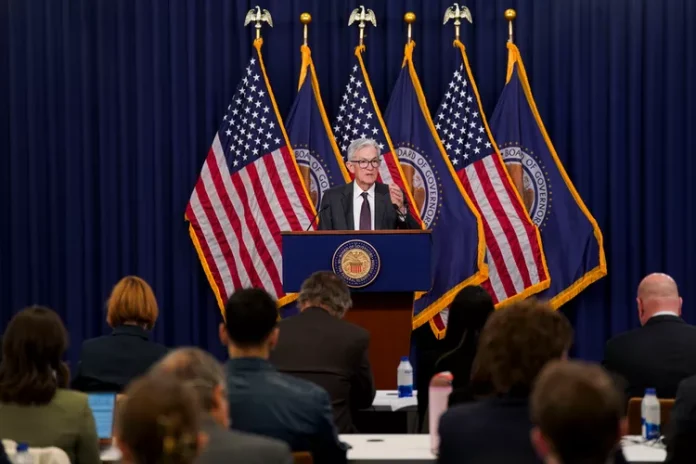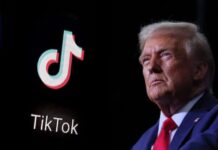The January 2025 FOMC meeting was widely anticipated in markets, expecting the Federal Reserve to do nothing. The Fed did nothing but leave interest rates unchanged. In doing so, it has prompted much discussion around a possible pivot in monetary policy. The overwhelming concern among participants is whether we are entering into a tightening phase, particularly weighing on growth stocks in the United States.
Fed Chair Jerome Powell explained that the risks are now balanced between over-tightening and not tightening enough to keep rates too low, and thereby risk re-igniting inflation. He also repeated his focus on core inflation as an indicator of future inflationary trends, and core inflation is still close to the Fed’s target of 2%. Such reassuring words still raise questions regarding future Fed action and how it may be impacted by political considerations and other influences.
Trump’s Impact and Inflationary Policies
The issue of the influence of former President Trump over the decisions of the Fed dominated the meeting. Even though the former president said he understood monetary policy better than the Fed, Powell was candid that the Fed’s decisions were not influenced by political pressure. However, some of Trump’s policies, including tariffs and immigration reforms, are inflationary. Mass deportation of low-wage workers could result in higher wages, which would increase inflation.
Trump’s attempts to influence oil prices by pressuring OPEC to increase production are also noteworthy. These efforts aim to mitigate inflation, but their success remains uncertain. The potential erosion of the Fed’s independence, if Trump continues to exert pressure, could have significant repercussions, including affecting the bond market and global equity markets.
Also read : Kia Recalls 80,000 Niro Vehicles Over Issue with Airbags
Policy Changes and Economic Projections
There were no policy changes in the immediate sense, but the Fed’s wording was subtly changed. They eliminated all mentions of “progress” toward the 2% inflation target, which suggested a growing worry about inflation. The Fed’s economic projections were left unchanged: two rate cuts this year and two more in 2026, with the long-term neutral policy rate coming in 2027.
The expectations of the market have significantly changed in the past few months. What started off as the possibility of continuous and deep cuts during 2025, are now reduced to less cuts with possible hikes in rates by 2026. The shift reflects the turning point of the monetary cycle of the country, with a focus on fiscal and trade policies rather than purely economic determinants.
Highlights from the Press Conference
The press conference held post FOMC meeting revealed to some extent what the Fed thinks on different matters. This was well echoed when Powell talked about the possible influence of public demands from Trump for rate cuts emphasizing Fed independence. In addition, he mentioned immigration and tariffs: “These factors might have some impact on monetary policy going forward.”.
The role of artificial intelligence in the economy was among the questions thrown at him. The recent selloff caused by AI was mentioned, notably affecting the shares of companies whose businesses rely highly on technology like Nvidia. There, he sidestepped its short-term implication on monetary policy and dwelt on broader macroeconomic trends instead.
Q&A Session and Interaction with the Audience
During Q and A, Powell handled several questions on potential economic uncertainty. He compared today’s stage to previous crises: this uncertainty is much more manageable. The Fed continues concentrating on a strong labor market and sustainable growth.
The session also stressed the need for the Fed to remain independent, especially when politicians try to muscle in on their affairs. The chairman assured the public that Fed decisions are grounded on economic data and not based on political will, ensuring monetary policy remains long-term focused on stabilizing the economy.
Momentum Factor ETF in a Bear Market
Investors are increasingly interested in the performance of Momentum Factor ETFs, particularly in bear markets. These ETFs adjust to market trends, potentially offering better returns during downturns. However, the challenge lies in predicting trend reversals, which can lead to underperformance if the ETF rebalances too infrequently.
The MSCI Momentum Index rebalances semiannually. Such frequency may not cover rapid market changes on a short-term basis. Discussions are underway to enhance the rebalancing frequency, which may strengthen performance but increase transaction costs. Investors have to make decisions considering all these factors while adding Momentum Factor ETFs into the portfolio strategy.
Career Advice and Financial Markets Discussion
For those interested in a career in financial markets, understanding market dynamics and identifying unique value propositions are crucial. Whether through technical expertise or insights into investor psychology, bringing something unique to the table is essential for success.
Training as a financial advisor can provide valuable skills, but it’s important to ensure compliance with regulatory requirements. Alternatively, focusing on educating investors about market mechanics can be a rewarding path, as demonstrated by successful educational platforms.
Also read : Coca-Cola Recalls Drinks in Europe due to High Levels of Chlorate
Final Thoughts
The next big meeting for market-watchers will be the Bank of England, given the UK is in a vastly different economic environment than the US, with significantly weaker growth and sticky inflation, making it probable that the Bank of England would cut rates ahead of the Fed.
In closing, the move by the Fed to keep its interest rates at bay was expected; however, the underlying dynamics and potentially upcoming policy changes are complex. Investors are urged to be watchful, keeping in mind both domestic and world factors that may impact market conditions in months to come.








